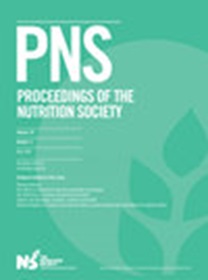鸡肉与植物鸡肉类似物的水解程度:体外消化比较
IF 4.5
2区 医学
Q1 NUTRITION & DIETETICS
引用次数: 0
摘要
越来越多的消费者采用植物性肉类类似物来替代真正的肉类产品,因为它们提供了一种更生态友好和可持续的蛋白质来源,同时还减轻了与牲畜饲养和屠宰相关的道德问题(1)。然而,人们对植物肉类类似物的营养质量,尤其是蛋白质消化率表示担忧。本研究旨在比较鸡肉和植物鸡肉类似物的营养成分和蛋白质水解程度。研究人员对两种鸡肉样品(胸脯肉和大腿肉)和四种商业植物鸡肉样品(P-C1[小麦蛋白 37%,豌豆蛋白 10%],P-C2 [大豆蛋白 63%],P-C3 [大豆和小麦蛋白 83%],以及 P-C4 [大豆蛋白 30%,豌豆蛋白 2%])的生熟样品进行了近似分析,以评估蛋白质、脂肪和能量浓度。首先对平均样品进行近似分析评估,然后使用单因子方差分析和 Tukey 检验(p <0.05)评估产品与烹饪之间的相互作用。对于熟制样品,按照 INFOGEST 统一的静态体外消化模型(2)进行体外消化。消化后,进行邻苯二甲醛(OPA)测定,以测量每个样品的蛋白质水解程度,并进行双向方差分析。与植物鸡肉(生:13.8 ± 5.3 克/100 克;熟:23.4 ± 4.5 克/100 克)相比,生鸡和熟鸡肉样本的蛋白质含量更高(生:19.8 ± 0.38 克/100 克;熟:30.55 ± 4 克/100 克)。生鲜和熟食样本的脂肪含量和能量浓度(生鲜:6.52 ± 1.5 克/100 克;熟食:9.6 ± 3.17 克/100 克)以及(生鲜:189.4 ± 28.1 克/100 克;熟食:291.相比之下,鸡肉脂肪含量(生:4.6 ± 2.7 克/100 克;熟:6.1 ± 4 克/100 克)和能量浓度(生:150.9 ± 25.4 克/100 克;熟:228.3 ± 20.7 克/100 克)分别较低。)产品-烹饪交互作用显示蛋白质含量显著增加(P ≤0.0001)(生:15.6 ± 2.3 克/100 克至 19.8 ± 0.74 克/100 克;熟:21.4 ± 0.55 克/100 克至 33.06 ± 0.71 克/100 克),脂肪含量 P<0.001 (生:2.7 ± 0.06 克/100 克至 8.3 ± 0.27 克/100 克;熟:3.29 ± 0.19 克/100 克):100克;熟食:3.29 ± 0.19克/100克至13.22 ± 0.33克/100克)。没有发现产品-烹饪对能量含量有明显的交互作用。对 OPA 和水解度分析进行的双向方差分析结果表明,与植物基鸡肉相比,鸡肉样品的水解度显著增加(P<0.0001)。这些发现将为改善植物鸡肉产品的营养成分提供大量信息。这项工作还将扩展到研究单个氨基酸的可用性和消化率。本文章由计算机程序翻译,如有差异,请以英文原文为准。
Degree of hydrolysis of chicken versus plant-based chicken analogues: An in vitro digestion comparison
The adoption of plant-based meat analogues is increasing as an alternative to real meat products among consumers because they offer a more ecologically friendly and sustainable source of protein while also alleviating the ethical concerns related to livestock rearing and slaughter (1). However, there are concerns regarding plant-based meat analogues in terms of its nutritional quality, particularly their protein digestibility. This study aims to compared between chicken and plant-based chicken analogues in terms of nutritional composition and degree of protein hydrolysis.Proximate analyses were performed for raw and cooked samples to assess protein, fat, and energy concentrations in two chicken samples (breast and thigh) and four commercial plant-based chicken (P-C1[Wheat Protein 37%, Pea Protein 10%], P-C2 [ Soya Protein 63%], P-C3 [ Soya and Wheat Protein 83%], and P-C4 [Soya Protein 30%, Pea Protein 2%]). As a first step, the proximate analyses were assessed for the averaged samples, then the product-cooking interactions was assessed using a one-way ANOVA followed by Tukey test (p <0.05). In vitro digestion was performed following the INFOGEST harmonised static in vitro digestion model (2) for cooked samples. After digestion, o- Phthaldialdehyde (OPA) assay was carried out to measure the degree of protein hydrolysis for each sample, and two-way ANOVA test was performed.Protein content of chicken was higher compared with the plant-based chicken, whereas fat content and energy concentrations were higher in plant-based chicken. The protein content of chicken was higher for raw and cooked samples (raw: 19.8 ± 0.38 g/100 g; cooked: 30.55 ± 4 g/100g), compared with plant-based chicken (raw: 13.8 ± 5.3 g/100 g; cooked: 23.4 ± 4.5 g/100g). Plant-based chicken have a higher fat content and energy concentrations for raw and cooked samples (raw:6.52 ± 1.5 g/100 g; cooked: 9.6 ± 3.17 g/100g) and (raw:189.4 ± 28.1 g/100 g; cooked: 291.3 ± 48.1 g/100g) respectively; compared to chicken fat content (raw:4.6 ± 2.7 g/100 g; cooked: 6.1 ± 4 g/100g) and energy concentration (raw:150.9 ± 25.4 g/100 g; cooked: 228.3 ± 20.7 g/100g). The product-cooking interactions showed a significant increase (P ≤0.0001) in the protein content (raw: 15.6 ± 2.3g/100g to 19.8 ± 0.74 g/100g; cooked: 21.4 ± 0.55 g/100g to 33.06 ± 0.71 g/100g), and fat content P<0.001 (raw: 2.7 ± 0.06 g/100g to 8.3 ± 0.27 g/100g; cooked: 3.29 ± 0.19 g/100g to 13.22 ± 0.33 g/100g) in both chicken and plant-based chicken samples. No significant product-cooking interactions on energy content was found. The results from a two-way ANOVA test of the OPA and the degree of hydrolysis analyses demonstrated a significant increase in the degree of hydrolysis of chicken samples compared with plant-based chicken (P<0.0001).The degree of hydrolysis and digestibility of chicken and chicken analogues was influenced by protein type, nutrient composition, and processing. These findings would provide substantial information for the improvement of plant-based chicken products with enhanced nutritional profiles. This work will be extended to investigate the availability and digestibility of individual amino acids.
求助全文
通过发布文献求助,成功后即可免费获取论文全文。
去求助
来源期刊
CiteScore
15.50
自引率
0.00%
发文量
190
审稿时长
6-12 weeks
期刊介绍:
Proceedings of the Nutrition Society publishes papers and abstracts presented by members and invited speakers at the scientific meetings of The Nutrition Society. The journal provides an invaluable record of the scientific research currently being undertaken, contributing to ''the scientific study of nutrition and its application to the maintenance of human and animal health.'' The journal is of interest to academics, researchers and clinical practice workers in both human and animal nutrition and related fields.

 求助内容:
求助内容: 应助结果提醒方式:
应助结果提醒方式:


